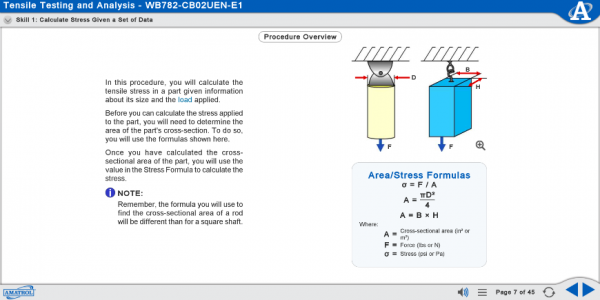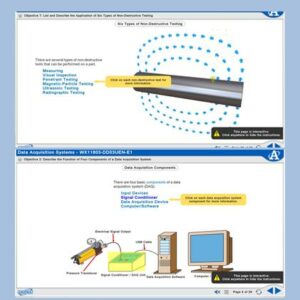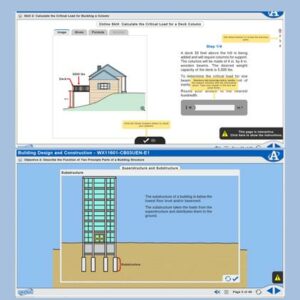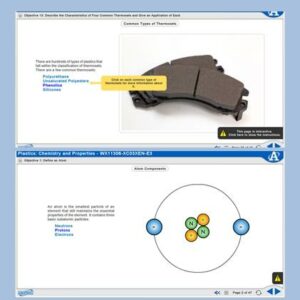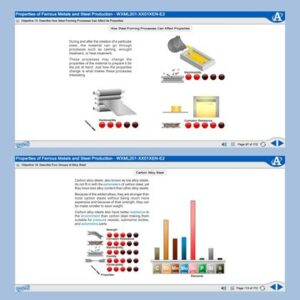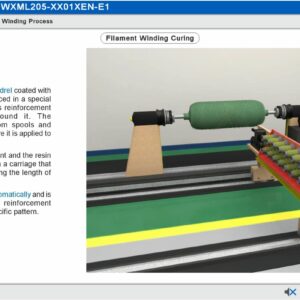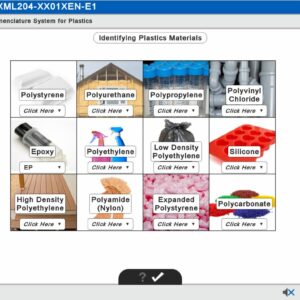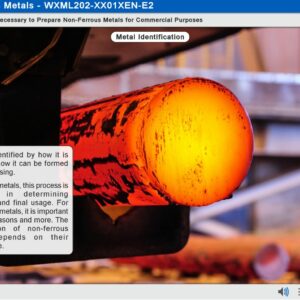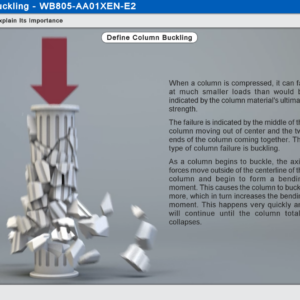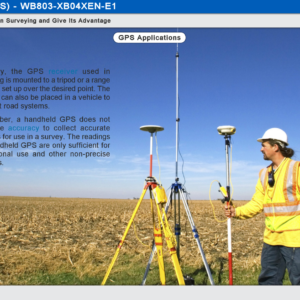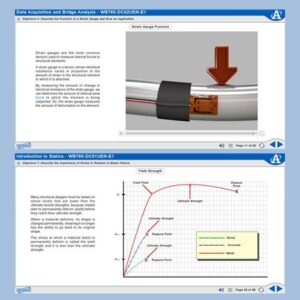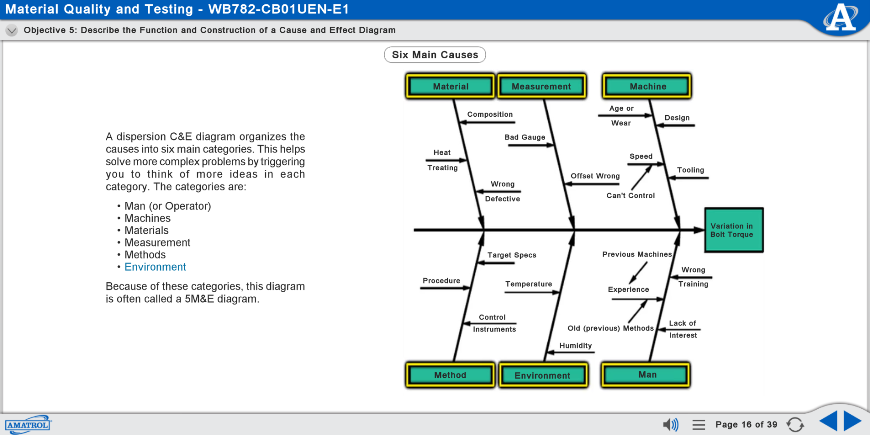
Requires:
- Computer (see Computer Requirements)
Options:
- Materials Technology 1 Learning System (96-MT1)
The Materials Technology 1 eLearning course (MB782) covers material quality control, tensile strength analysis, and data acquisition systems. Learners will study topics like: the function and construction of a cause and effect diagram; the application and types of destructive testing; the types of tensile testing machines; how to plot and analyze a stress/strain diagram given a set of data for a tensile test; the operation of a linear potentiometer; and the function of a data acquisition formula.



